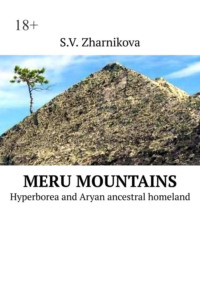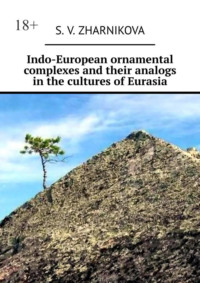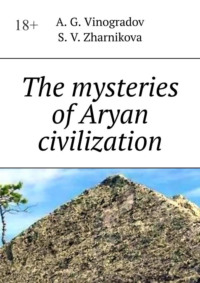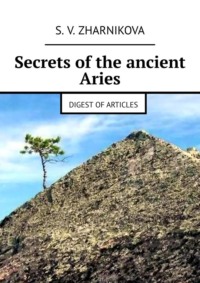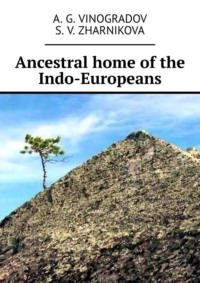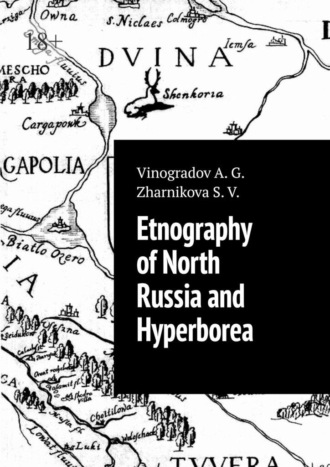
Полная версия
Etnography of North Russia and Hyperborea
But you can’t say that in the Russian North (and especially among the Pomors) the same type of «lotus-blue-eyed, reed-haired, light-bearded» warriors sung by the «Mahabharata» or «golden-haired, blue-eyed arimasp of the ancient Greeks is so rare that it is so close to the descriptions of the mighty» white-eyed «Chud Zavolotskaya Russian chronicles and folk traditions. «Chud» (chudnyy, chudesnyy, chudo -miraculous, wonderful, miracle) – nothing in this name speaks of the Finno-Ugric affiliation of this people, it only indicates that it caused surprise among its neighbors, seemed to them «miraculous» or «miraculous» -«chudesnym» or «chudnym».
A. Grandilevsky writes further: «The mental power of the prehistoric Chud is not directly indicated in popular rumor, for it can already be said more thoroughly than the legends that Zavolotskaya Chud initially claimed to be human idol sacrifices, ferocious cruelty to enemies, inability to invent more the best adaptations for domestic life and work, but on the other hand it’s nowhere to be seen that she had a sympathy for wandering life, or did not allow open relations with other peoples, or had the inclinations to quickly assimilate the beginnings of cultures, is not visible in it «conquest, but there is evidence hinting at her particular desire for better public amenities, which later gave her extreme stability and widespread fame.»
The Kurostrovsky sleeve of the Dvina at the Kur village is known, at Kholmogor – Kuropolka. In the old days, the posad itself and the hillfort Kholmogor was called Kuropol. In the 19th century he was considered miraculous.
Richard James, in the early 17th century, recorded that in Kholmogory «Chud lived before, and she spoke a language different from the language of the Lapps and Samoyeds, but now she is no longer there.»
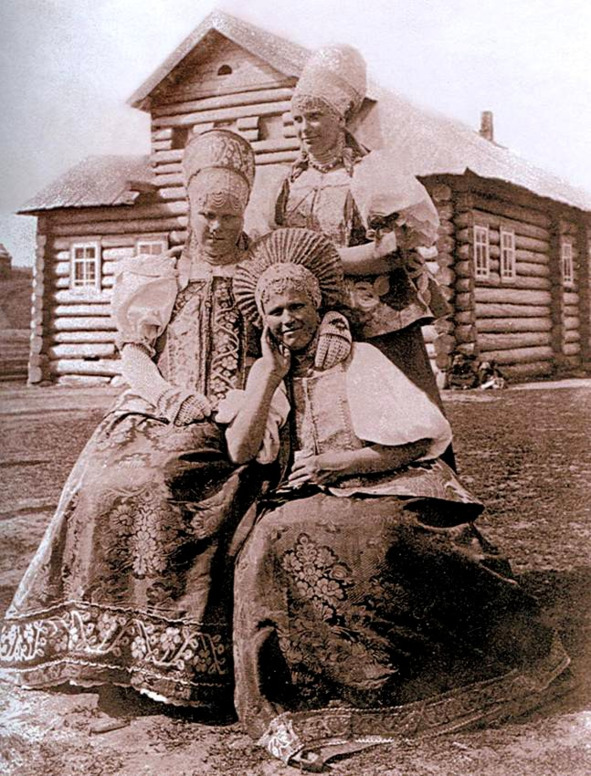
Pomors
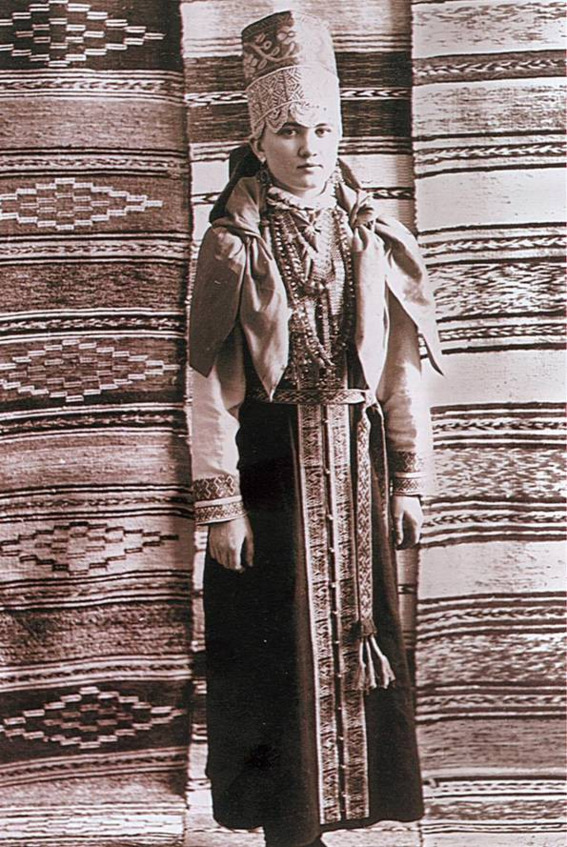
Kevrola
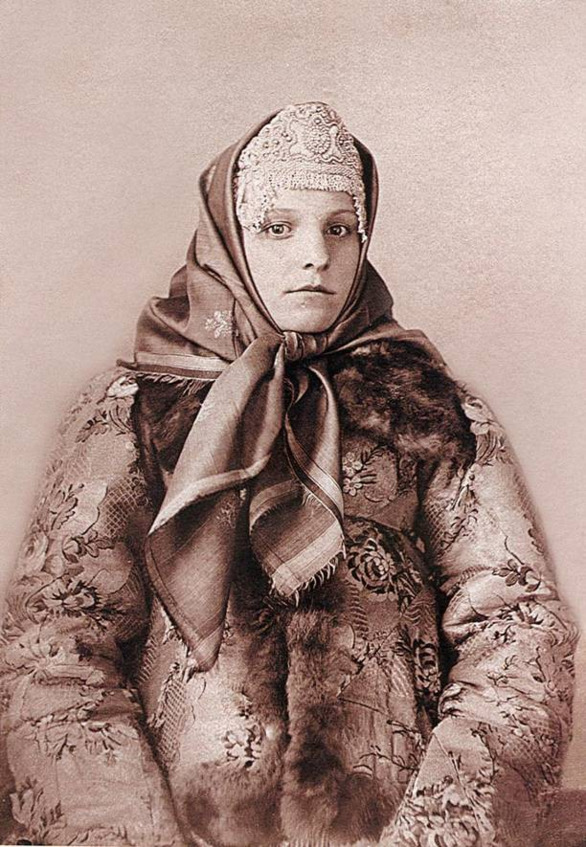
Kargopol
According to the calculation of 1850, there was no Chud in the Arkhangelsk province, although 25 Gypsies, 1186 Germans and 570 Jews were noted.
According to the lists of settlements of the Arkhangelsk province in 1861 (information from parish lists), Chud lived with Russians in Arkhangelsk, Kholmogorsky and Pinezh counties.
In the Arkhangelsk district in the villages – Bobrovskaya (Bobrovo), Yemel’yanovskaya (Arkhangel’sko), Stepanovskaya (Kumovskaya, Kukoma), Savinskaya (Zarechka), Tsinovetskaya (Tsenovets), Filimonovskaya (Abramovshina), Uvarovskaya (Uarovskaya), Samyshevskaya (Boloto), Petrushevskaya (Peshkovo), Durasovskaya 1 (Mal’gina Gora) and Durasovskaya 2, Chukharevskaya (Chukarenskaya), Kondrat’yevskaya, Aleksandrovskaya, Yeletsovskaya, Ust’lyyadovskoye (Amosovo), Nefed’yevskaya, Burmachevskaya, Olodovskaya (Gorka), Mitrofanovskaya, Chukhchinskaya, Patrak’yevskaya, Ivaylovskaya.
In Kholmogorsky district in villages – Annina Gora (Vavchugskaya, Belaya Gora), Rogachevskaya (Surovo), Tikhanovskaya (Tikhnovskoye, Shubino), Matveyevskaya (Neverovo), Marikovskaya (Marilov Pogost), Perkhurovskaya (Pergurovskaya, Shagino), Petrovskaya (Petrovo), Danilovskaya (Churkino), Kosnovskaya (Puginy), Trekhnovskaya (Kuchin navolok), Boyarskaya, Andriyanovskaya (Tyshkunovo), Verkhnemategorskom-Yemetskom, Shil’tsova (Shal’tsova), Kozhevskaya gora (Kozhina Gora), Khvosty, Korchovskaya, Yursobitskaya, Goroncharovskaya (Goroncharovo), Sukhareva, Zapol’ye, Oseredskaya, Andreyanovskaya, Bereznik, Zaozerskaya, Filippovskaya, Perdunovskaya (Chasovenskaya-Kuznetsovka), Karzevskaya, Terebikha, Oshchepova (Yakimovskaya), Gorka (Zinov’yevskaya), Terent’yeva, Nizhniy Konets (Polumovskaya), Brosachevskaya (Brosachikha), Kul’minovskaya, Kyazmezhskaya (Kyazlish) (along the rivers Boyar-Kurya, Kurostrovka, Emtsa, Dvina, Vaimuga, Lake Kulmino).
In Pinezhsky County, a Chud place with Russians was in the villages of Verkhnekonskaya and Valtegorskaya (Valteva) (along the rivers Nemnyuga, Ezhuge and Pinega).
Belorussians (in the Vologda province they were considered Chud) were counted in the Kholmogorsky district in the villages of Tovra, Voronovskaya, Derevenka, Nizhny Orlets, Upper Orlets, Kuryanoga, Ichkovskaya, (Shatikha) Stupino, Panilovskoye, Vlasyevskaya, Novinskaya, Gorsko-Kuznev Vysokiy Bor, Kozminskaya, Chasovenskaya, Eliseevskaya, Kashinskaya, Velikodvorskaya, Andriyanovskaya (along the rivers Dvina, Ukhtoostrovka, Yemets).
Purely Chud villages were considered Antsiferovskaya, Vakhromeevskaya, Expense (Khodchegory), Berezninskaya, Obukhovskaya, Nizhnematigorsk (Borisoglebsk, Demidov), Demidov (Pogost), Tyumshenskaya 1 (Tyushmenevskaya, Davydovskaya) and Tyumshenskaya 2 (Belogorsky) in Kholmogorsky district along the Boyar-Kurya river. Even then, they paid attention to the fact that the areas inhabited only by Chud bore exclusively Russian names.
In the Shenkur Uyezd, the Chud villages were not distinguished, and in the 14th century its entire territory with Verkhovazhy was considered the Chud country. Chud in Shenkursk was taken into account until the 16th century.
It should be noted that Chud stood out together with migrants from Novgorod, in areas where they were not, instead of Chud, Russians were indicated. In Arkhangelsk Chud considered the Russian Old Believers.
The list of populated areas of the Vologda province in 1859 indicates the presence of Chud as an ethnic group in the province, different from the Russians and Komi-Zyryans. Although the metropolitan scholars considered her Finns, and in the parish lists – Belarusians.
According to the parish lists, Chud was available in Nikolsky, Solvychegodsky and Ustsysolsky counties in neighboring areas in 62 villages (4234 people).
In Nikolsky Uyezd (1630 people) – Vymol, Lychenitsa, Pogudino, Hay, Kurilovo, Alferova Gora, Myateneeva Gora, Zavachug, Sushniki, Kayuk, Kobylino-Ilyinskoe, Spitsino, Ploskaya, Kobylkino, Navolok, Gorka, Gorbunovskaya, Pavlovo, Zavrazhe, Manshino (along the rivers Sherduga, Zhydovatka, Birch, Zavachuga, Ishenga, Kokoshikha, Imzyuga, Yug).
In Solvychegodsky Uyezd (2938 people) – Astafyeva Gora, Fire, Zmanovsky fix (Zmanovo), Mishutino, Leunino, Eremina Gora (Okolotok), Lisya Gora, Kuryanovo, Yaruny (Yartsevo), Goncharovo (Gondyukhiny), Mishutino Verkh (Gusikha), Potanin fixes (Prison), Pozdeev mends (Omelyanikha), Golaya gorka, Byk, Goryachevo, Konishchevo, Vyatkina Gora, Verkholalsky churchyard, Knyazha, Stroikovo, Popova exhibition (Pupok), Tokarevo Zholtikovo, Pryanovskaya (Byzov), Vasilyevskaya, Frolovskaya (Zuikha), Tregubovskaya, Varzaksa, Novikovskaya (Kuliga), Grishanovskaya (Balushkins), Rychkovo, Konstantinovskaya (Fedyakovo), Fedyakovo, Teshilova Gora (Kushikha), Novoselova Gora (Novoselka), Kochurinskaya (Zaruchevye), Grigoryevskaya (Kalinino), Gorka, Makarovskaya (Komarovo), Ustye, Selivanovskaya (Isakovs), Nechaevskaya (Mezhnik), Ryabovo, Koneshevskaya (Butoryana), Sludka, Deshlevskaya (Koshary), Matyukovskaya (Balashovs), Chernyshevskaya (Artemyevshina), Prilitsa, Zadorikha, Bereznik (along the rivers Lala, Varzoksov, Torzov, Tornov, Chakulka, Mezhnik, Hearth, Dorovitsa, Vychegda).
In Ustysysolsky Uyezd (749 people) – Mishinskaya (Podkiberye), Spirinskaya (Zanyule), Rakinskaya (Bor), Shilovskaya (Zarodovo), Garevskaya (Trofimovskaya), Bor-Nadbolotomskaya (Keros), Urnyshevskaya (Verkhnyy Konets), Matveyevskaya (Spas Porub), Karpovskaya (Gavrilova), Kulizhskaya (Chinicheva), Raevskaya (Ostashevskaya), Podsosnovskaya (Lobanova), Nelitsovskaya (Shmotina), Trofimovskaya (Poryasyanova) (along the Nevlyora, Luza, Nyula,, Porub, Buba).
In Kargopol County in 1316, along the Lekshmozero (Chelmogora), 53 km. from Kargopol there was a Chud population. In 1349, the Roman Lazarus noted the presence of Chud and Lopi at the Murmansk monastery in Obonezhie.
According to the information of 1873, in the Olonets province, Chud was considered – 26172 people (Chud russified – 7699 people). Apart from them, Finns were counted – 3,775 people, Lapps – 3,882 people, Karelians – 48,568 people.
Chud was located in Lodeinopolsky district (7447 people), Olonets district (1705 people), Vytegorsky district (6701 people), and Petrozavodsk district (10319 people).
The name Chud was attributed to this ethnos, according to Academician Shegren (1832), who indicated that, he lived in Belozersky and Tikhvin districts of the Novgorod province, where the Russians called them Chud, and the Vepsians themselves called themselves Zjudi. However, Novgorodians also identified Kolbyagi (Tikhvin) and Varangians (Ilmen).
Why St. Petersburg scholars have decided that the ид Zhidi’, who called themselves «Ljudi,» are Chud, and for example, not the descendants of the Novgorod ующих Judaizers’, it is not clear. Most likely, an error has occurred. The handwritten L looks like a handwritten capital letter Z, when publishing the manuscript in German, it was read as Z, and then when re-publishing Shegren’s work in Russian, and they read the name of the people as Chud. And under the authority of the academician, who did not write this at all, they began to call the Veps-Ludikov – Chud. After 1920, these people began to be called by self-designation of the greater part of the Vepsians, and then, they were recorded in a large part in Karelians.
Chud Russified lived separately from the rest of the Olonets Chud (Vepsians) in the east in Vytegorsky uyezd on the border with Kirillovsky and Kargopolsky uyezds.The population of these places does not belong to the Vepsians Russified by any of ethnographers.
She lived Chud Russified in 118 villages of Vytegra district: Pesok, Venyukova, Vasil’yevskaya (Ishukova), Bobrova, Nikiforova, Zaparina, Ukhotskiy pogost (Il’ina), Klimovskaya (Tobolkina), Yefremova, Popad’ina, Niz, Mechevskaya, Yeremina, Leont’yeva, Yershova, Okulova, Bryukhova, Kobylina, Prokop’yeva, Yermolina, Pankratova, Kopytova, Mishutkina, Kozulina, Vasil’yeva, Moseyevskaya (Chernitsina), Poganina, Yurgina (Yurkina), Ambrosova (Obrosova), Sergeyeva, Saustova, Likhaya Shalga (Shalga) (on the river Ukhta);
Surminskaya (Teryushina), Yemel’yanovskaya (Sharapova), Patrovskaya, Filosovskaya, Ignatovskaya (Shil’kova), Demidovskaya (Zapol’ye), Duplevskaya (Zapol’ye), Yermakovskaya (Zapol’ye), Budrinskaya (Kromina), Prokopinskoye, Antipinskaya (Gorka), Grigor’yevskaya (Novoselova), Tikhmangskiy Pogost (Danilovo), Vakhrusheva, Vakhrusheva, Palovskiy Pogost (Dudino), Aksenova, Klepikova, Fat’yanova, Fedorova, Burtsova, Demina, Rukina, Novoye selo, Trofimovskaya (Chasovina), Oryushinskaya (Vydrina), Murkhonskaya, Lavrovskaya (Petunina), Dmitrovskaya (Tsanina), Fedotovskaya (Pavshevo), Feofilatovskaya (Rubyshino), Ryabovskaya (Simanova), Mininskaya (Berezhnaya), Kirshevskaya (Kruganova), Dalmatovskaya (Savina), Tretiakovskaya (Manylova), Mukhlovskaya (Knigina), Fertinskaya (Vaneva), Koshkarevskaya (Filina), Iarakhivskaya (Parakeyevna, Slasnikova), Sidorovskaya (Davydova), Yeltomovskaya (Verkhov’ye), Mikhalevskoye (Vypolzovo), Guyevskaya (Fokino), Manuylovskaya, Zheleznikovskaya (Gurino), Kashinskaya (Verkhov’ye), Kuromskaya (Konets), Gorlovskaya (Mal’kova), Il’inskaya sloboda (along the Tikhmang River);
Antonovskaya (Baranova), Mokiyevskaya (Rusanova), Murav’yevskaya, Gorbunovskaya (Pustyn’), Fominskaya (Gorka), Fedos’yevskaya (Matyushina), Kuznetsovskaya (Kirilovshchina), Kachalovskaya (Privalova), Vershininskaya pustosh’ (Vershinina), Isakovskaya pustosh’, Lukinskaya (Povinki), Aleksinskaya (Gurino), Davydovskaya (Maksimova) (along the river Shalgas); Perkhina (Antipina), Pashinskaya (Beregovskaya), Antipina (Antipa, Perkhina, Malaya Kher’ka), Fedorovskaya (Khaluy), Antsiferova (Khaluy) (along the Indomanca River);
Lebyazh’ya pustosh’ (by the Desert Creek);
Deminskaya (Dubininskaya), Matveyevskaya (Procheva) (by Shey-brook); Falkova (at Ukhtozer);
Antsiferovskaya (Bereznik, Khaluy), Krechetova (Pankratova), Agafonovskaya (Bol’shaya), Rakovskaya (Ugol’) (at Antsiferovsk lake); Borisova Gora (Gora), Mitina, Pankratovo (Matveyevo, Isayevo), Ivanova (Kir’yanova), Blinova (Gorka), Yelinskaya (Kropacheva, Novozhilova, Yermolinskaya) (at Isaevsk lake);
Antsiferovskaya (Anan’ina, Puzhmozero), Yermolino (Novozhilovo) (at Pujmozero).
In the 19th century, scientists called indiscriminately the peoples of the Perm group and the Vod, and the Chukhons, and the Karelians, and the Estonians, although talking about the mono-ethnic composition of the population of Estonia in the 19th century doesn’t make sense. The merger of several nationalities into one Estonian people and their assimilation of other ethnic groups (including Slavic Krivichs and Germanic Danes) were not yet completed. Therefore, it can be assumed that the name of the miracle was given to the Finno-nized part of the local population by Novgorodians, in other places the presence of the Finno-Ugric population was not recorded.
The list of populated places of the St. Petersburg province of 1864 was attributed to Chud, based on the opinion of scientists, whose name (vatiya-lyset) was derived from the word «waddy», the meaning of which is not known in Finnish. The people are closer to Estonians than Karelians. Vod lived in Peterhof, Yamburg counties. Moreover, in the parish lists, part of its settlements is called Izhora.
In addition, Chud named part of the settlements lying in the Russian regions along the Luga River – Pulkovo, Sola (Sala), Nadezhdina (Blekigof), Mariengof, Koshkino, Zakhonye, Sveisko, Zhabino, Kalmotka, Verino (Nikolaevo), Kuzmino, Yurkino, Kepi, Gorka, Podoga, Lutsk, Lutsk, Mikhailovskaya, Novopyatnitskoe.
Official statistics, according to the census of 1897, separated the vody and ests from chud. In addition to vod and estonians, 303 people spoke miracle languages in the Yamburg district. The Vepsians were not there.
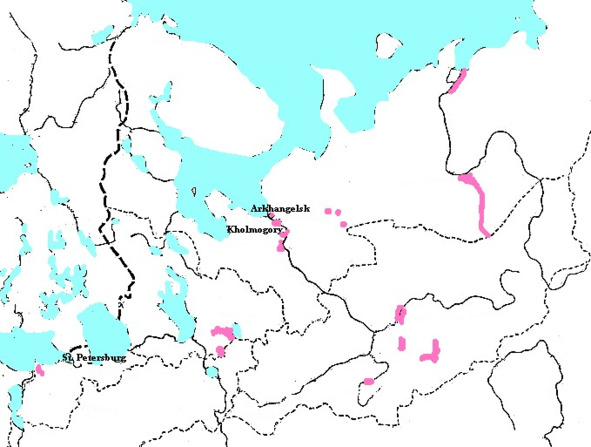
Chud resettlement in 1850
In 1535 the population of Toldozhsky, Izhersky, Dudrovsky, Zamoshsky, Egorievsky, and Opoletsky, Kipensky, and Zaretsky pogosts was referred to Chud in the Novgorod lands.
Given the relocation from Finland, Estonia and Livonia in the 17th century, as well as the massive population decline at the end of the 16th century and the beginning of the 18th century can be assumed assimilation by local settlers.
The Sami, who knew the chud well, did not mix them with the Karelians.
According to the legends of the Karelians and Sami, Chud – «murderous murderers», every summer came from the mountains and killed many people. Sami «Chute, Chud» – «pursuer, robber, enemy.» In the traditions of the Sami, it is indicated that in ancient times, the White-eyed Chud came to their lands. She wore iron armor over her clothes, and iron horned helmets on her heads. Faces were covered with iron nets. The enemies were terrible; everyone was slaughtered in a row. A similar form of the Scandinavian Vikings took place only from the 13th century.
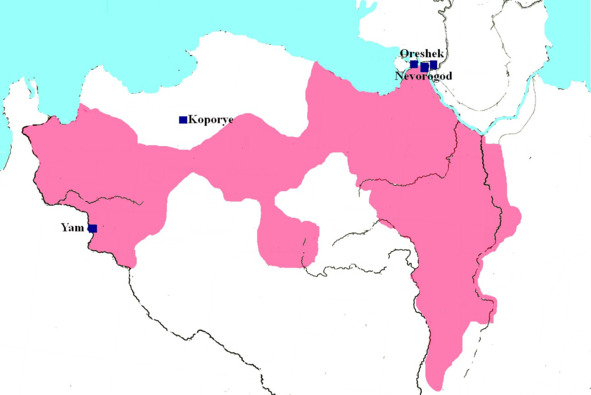
Chud resettlement in Novgorod lands in 1535
The Finno-Ugric peoples them selves always talked about Chud as about some other people. Komi-Zyryans and Permyaks distinguished themselves from the «real Chud.» The reason is in the neighborhood, they knew Chud. For Komi-Permyaks and Udmurts – Chud is an ethnic group completely alien to them in language, which, like Novgorodians and Vyatchians, took part in tribal strife and war.
The Vyatka chronicler mentioned the peoples of Chud and Ostyaks on Chepets. According to legend, Chuds fortifications were located in these places, and it is here that bronze objects, united by the name Perm Animal Style, are found. Experts have always recognized the Iranian influence on the art of the Perm animal style.
Descriptions of the Komi indicate an unusually large growth of representatives of the Miracle. In addition to the Chud-giants, the Komi-Permyaks distinguish another people of small stature – Chudov.
Traditions about Chyud are associated with legends about the people of Sirte (Sihirta, Sirchi), who lived in the tundra before the arrival of the Nenets. According to legend, the syrts were small in stature, they said, slightly stuttering, wore beautiful clothes with metal pendants. They had white eyes. The houses of Sihirt were high sand hills; they rode dogs and grazed mammoths. Like Chud, Sirte were considered skilled blacksmiths and good warriors. There are references to military clashes between the Nenets and Sihirt. There are known cases of the marriage of the Nenets to women of Sihirt. The Nenets distinguished sikhirt from themselves, Khanty and Komi.
Academician I. Lepekhin wrote in 1805: «All Samoyed land in the Mezen district is filled with desolate dwellings of the once ancient people. They are found in many places: by lakes, on the tundra, in forests, in rivers, made in mountains and hills like caves with «holes like doors. In these caves they find furnaces and find debris in iron, copper and clay household items.»
For the first time, the Nenets legends about the Sihirt, who spoke a language different from the Nenets, were recorded by A. Schrenk in 1837 in the Bolshezemelskaya tundra. The Nenets were convinced that the last syrtes even 5 generations before the 19th century (17—18th century) met on the Yamal Peninsula, and then finally disappeared.
They assume the original meaning of the word Chud – «Germans», from the Gothic «Tsiud» – «people». But the Thiudos is mentioned among other peoples affiliated with the Gothic power of the 4th century and therefore not German. The Jordan wrote: «Germanarich, the noblest of the Amals, who conquered many very warlike northern tribes and made them obey their laws. Many ancient writers compared him with dignity to Alexander the Great. He conquered the tribes: Golthescytha, Thiudos, Inaunxis, Vasinabroncas, Merens, Mordens, Imnisscaris, Rogas, Tadzans, Athaul, Navego, Bubegenas, and Coldas».
Chud is used in the Mahabharata as the name of the Chedi people. In the Puranas, the Kurus, Chedyas peoples are indicated next to Vatsa and Kauravyas.
In Pomorie (in Kemi), it was believed that Chud had a red skin color and went to Novaya Zemlya. It is appropriate to recall that the inhabitants of ancient Egypt (the country of Lower Kemi) considered themselves red-skinned immigrants from the country of Upper Kemi.
Thus, from the legends, traditions, and beliefs that remained in the Russian North right up to the turn of the 19th and 20th centuries, an image of a people grows up – a powerful, rich, independent, distinguished by a strong physique, possessing sacred knowledge and amazing abilities. The name of this people is Chud Zavolotskaya. But since the legendary «White-eyed Chud» lived primordially on the lands where the Scandinavian sagas placed the country of Biarmia and the fabulously wealthy warlike Bjarmas, it remains to draw a logical conclusion: Chud Zavolotskaya and Bjarma are one and the same.
And if we go even deeper downward, then next to the names «Chud» and «biarma» there will be «Unna-Huns (Huns)», «Alano-Russes», and «Rusolans», «Cimmerians», «Sarmatians», «Scythians-Rus», «Arimasp», «Issedon», «Hyperborea», Aryans -" Northern Kourou», etc. All of them lived on the shores of the White (Milky) Sea, where, according to the texts of the Rigveda, the gods churned the ocean to get the drink of immortality «amrita».
Archaic Slavic ethno and hydronymy and the problem of the Slavization of the Russian North
Ethnographers and historians have different opinions about the time of settling of the Finno-Ugrians in the North. If we are talking about a specific Finnish or Ugric ethnic group, then its settlement in the modern territory dates back to the 5th century (Livs), 10th century (Finns), 15th century (Nenets). If we speak of an abstract Finno-Ugric ethnos, then its settlement is attributed to the 3rd-2nd millennium BC. Slavic settlement in the Russian North is shifted by most historians to the 9—12 centuries. To reconcile positions, a version of the presence of an ancient Vepsian substrate, which is reflected in the legends about Chudi, and its determining influence on the ethnogenesis of the Russian North, is put forward. (Pimenov V. V. Veps: an essay on ethnic history and genesis of culture. M. L. Science. 1965).
Russian North do not have a reliable etymology. So the name of the river Vologda is formed from the supposedly existing Finnish term «valgada» – «white», but in the Finnish names there must be a geographical term to which the definition refers.
Onega – the name of the river is explained from the Finnish «enoyogi» – «rapid flow». But how to explain the name of Lake Onego, from which the river is believed to have got its name. Pinega, the right tributary of the Northern Dvina, is 800 kilometers long. Since the 19th century, the name is explained from the Finnish «pienga» – «small river». Such examples could be greatly expanded. The use of the Finno-Ugric concept by historians and ethnographers leads to curiosities when they try to find Finno-Ugric interpretations of names for rivers that have different, from Russian, independent names in the Finno-Ugric languages (for example, Vychegda – Ezhva).
On the other hand, when analyzing toponyms in the central regions of the North, for example, in the Tarnogsky district of the Vologda region, out of settlements, large and small, only 6 have non-Russian names (MAIKTS 6.1985).
This allows us to say that the contribution of the Finno-Ugric substratum population to the ethnogenesis of this territory was extremely insignificant, if any.
Moreover, a wave of migration of the Finno-Ugrians from the borders of the Swedish kingdom to the territory of the Russian state in the 17th century was recorded.
The inconsistency of the data, it would seem, does not make it possible to determine the presence or absence of the Slavic (or, more precisely, the North Russian) population in the era preceding Kievan Rus.
However, modern science has found indicators of the course of ethnic processes. So Academician B. A. Rybakov showed the connection between the ethnonyms of the Slavic tribes with the time of their formation. «The division of tribal names into original and acquired in the process of later colonization allows us to link the issue of their dating with the determination of the time of the beginning of colonization.» (Rybakov B. A. Kievan Rus and Russian principalities of the XII – XIII centuries. M. Science. 1982). He writes: «Of particular importance is the determination of the time of the formation of tribal alliances. Nestor, describing the ancient history of the Slavs, uses only the names of tribal unions, not denoting small tribes anywhere, but this does not determine the initial date of the formation of unions. However, an analysis of Nestor’s text can provide an answer to the question of interest to us. Until now, no attention has been paid to the fact that the names of peoples in Nestor are mainly divided into two groups: some names end in "-an» or "-yan» (polyane, mazovshane, etc.) and, possibly, come from certain toponyms, and others are in "-ichi» or "-tsi» and have a clearly patronymic coloration (radimichi, vyatichi). The terminology of West Slavic sources agrees with this.
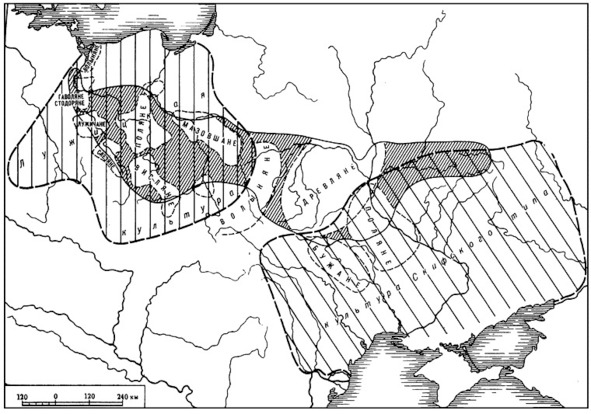
B. A. Rybakov. Local archaeological groups of the 1st millennium BC in comparison with the placement of later alliances of Slavic tribes
The main thing is that when both groups are plotted on the map, an interesting pattern emerges: the groups form two zones – an inner zone and an outer zone that covers it from all sides.
The inner zone (names like «polyane») coincides with the area of settlement of the Slavs in the Scythian-Skolot time, and the outer zone (names like «radimichi») – with a wide area of later colonization. In the outer zone, there are tribal names formed according to both principles – both toponymic and patronymic, but we find patronymic only in the outer zone of colonization. The inner zone, which coincides mainly with the ancestral home of the Slavs, knows only names such as «polyane», «vyslyane» (three exceptions: sever, khorvats and dulebs) and does not know the names of the second type at all…




